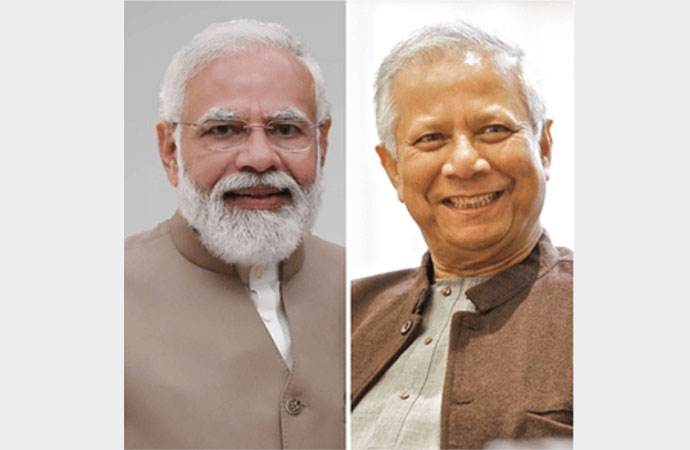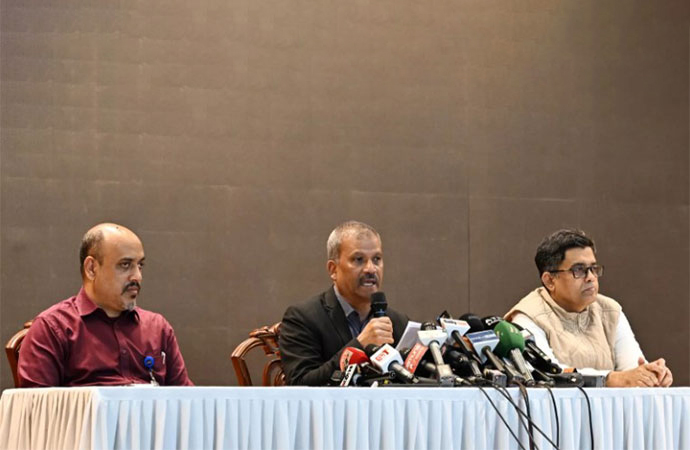Nature

Wryneck merges with tree-trunk. Photo: Enam Ul Haque
We took a second look at what seemed like an odd-looking Myna; and discovered a rare winter visitor - the Wryneck. It was an incredible spectacle - a super-stealthy bird sitting smack on an overhead cable! We usually see a few Wrynecks in Bangladesh every winter, but have never seen one sit out in the open before.
The weary Wryneck, after its long migration-flight to the placid Purbachal, was simply soaking up some warmth from the morning sun. The bird's tiny toes clasped the metal cable tightly; and the feathers of its belly and throat were all fluffed up. The autumn sky over the Wryneck was bright, blue and cold.
We recalled how in a passionate poem titled 'Weariness' the great nineteenth-century American poet Henry Wadsworth Longfellow looked at the feeble feet of a bird of passage and wrote the following haunting lines:
O little feet! that such long years
Must wander on through hopes and fears
The Wrynecks that migrate to Purbachal in winter have much to hope for and quite a lot to fear. These birds feed mostly on ants, spiders and beetles crawling in the grass and scrubland. Those crawling army of insects are still aplenty in the uninhabited Purbachal; but quite likely to vanish soon.
On the fallow lands of Purbachal we see a few Wrynecks every winter. Their camouflage garbs keep them fairly undetectable on the ground. Certainly the Wrynecks realise very well that they are camouflaged and invisible. That is why they keep sitting on the ground when the farmers of Purbachal walk very close by.
For the close-up portrait of a Wryneck we sometimes tiptoe closer to it, relying entirely on its habit of sitting still till the last moment. Going closer to the Wryneck, however, is not problem-free. It exposes the bird to the farmers, their children and dogs that were mercifully oblivious to its presence before.
A young boy once followed us up close to a Wryneck, saw the bird on the ground and ran away screaming: "Snake, snake." The boy was not a dummy; the Wryneck is a bizarre bird that looks somewhat like a snake. It may easily be mistaken for the poised head of an Oriental Rat Snake or any other brown serpent.
Moreover, the Wryneck deliberately mimics the snake by slowly twisting its tail and turning its head from side to side. The feathers of its throat and belly are patterned to look like the scales of a snake. We do not know for how many million years the Wryneck has been perfecting that extraordinary mimicry.
At the breeding ground, the Wrynecks are known to make snake-like hissing sounds in their nest-holes when visited by predators. At Purbachal, you may see a Wryneck sway its head like a snake; but never hear it hiss. That sinister little trick is reserved for use in nest-holes.
The proclivity of head-twisting is the reason why the bird is called 'Wryneck'. Because of that weird behaviour, the Wryneck was used in witchcraft in ancient Greece. The bird was believed to possess magic powers to make people fall in love. A Greek goddess used a Wryneck to stir love in the heart of a great Grecian god.
The Greeks, however, did not fall in love with the Wryneck in spite of its magic power. They used the bird to make love-charm to arouse love in other Grecians. Unfortunately, many Wrynecks were killed to make the Grecian love-charms.
We feel sorry for the failed lovers and the dead Wrynecks of olden Greece. The Grecian gods and their earthly admirers have long perished; but the Wryneck lives on. The Grecian love-charm or 'iunx' stays with the Wryneck's scientific name Jynx torquilla to this day.
'Jynx' has become 'Jinx' and means an evil-spell in the 'modern' English language. Ted Hughes, a passionate bird-watcher and the only English Poet Laureate who visited Bangladesh, was probably thinking of the Grecian love-charm turned evil-spell when in his poem titled 'Crow and the Birds' he wrote: 'The Wryneck crooked in the moon.'
The bird's official English name, 'Eurasian Wryneck' lauds the fact that it lives only in Europe and Asia. The name also separates it from the world's only other Wryneck - the African Wryneck, often called Red-breasted or Red-throated Wryneck. Sadly the four other continents of the world have no Wrynecks.
From November to April, the Eurasian Wryneck lives in Bangladesh and other countries of the Orient. It migrates to northern parts of Asia and Europe when the monsoon hits the Orient. The Wrynecks we see in early November at Purbachal every year are returnees from the breeding areas in Mongolia, China or Russia.
After spending the six dry months in Bangladesh, the Wrynecks fly again northward in April to breed. Come November, they routinely return to Bangladesh and reclaim the land they had left behind six months before. We wonder how the Wrynecks, without any magic power, cope with the changes we inflict on that land.
Every time the Wrynecks return to Purbachal the land looks very different. Every time there are more bricks, more bitumen, more walls and more cables. The grasslands and scrubs are more truncated and trimmed; and the ants and spiders are scarcer. Still, the Wrynecks can somehow recognize Purbachal as their winter home.
After a few years, however, Purbachal will remain recognizable as a home to the Wrynecks no more. The birds will have to move on and find a home elsewhere or perish. The future of these ground-hugging insect-gleaners is bleak in Purbachal as in most other places in Bangladesh.
The European countries have been keeping track of the population of the Wryneck and found that the bird was not doing well and needed protection in a few countries. Wryneck has been protected in the UK against all persecution under its Wildlife and Countryside Act 1981. The EU also has introduced some protections.
In Bangladesh, we have laws to protect nearly all birds, including the Wryneck. But to save the Wrynecks we need to protect the ants, spiders and beetles against extermination by indiscriminate use of pesticides. The poor birds cannot protect their food if we insist on destroying that across-the-board.
Enam Ul Haque is the Chairman of WildTeam. First Published in The Business Standard.

























Leave a Comment
Recent Posts
“My Ekushey Padak award is ded ...
This year, the government awarded the Ekushey Padak 2025 - the country ...
Biman is an inconvenient airli ...
I was on a flight of Biman from Dhaka to Bangkok on 28 February when B ...
Bangladesh’s art treasures deserve a global stage: C ..
The need for a consensus on the election
July uprising offers big opportunities for reforms, ..
Former Dhaka University professor Chowdhury Rafiqul ..